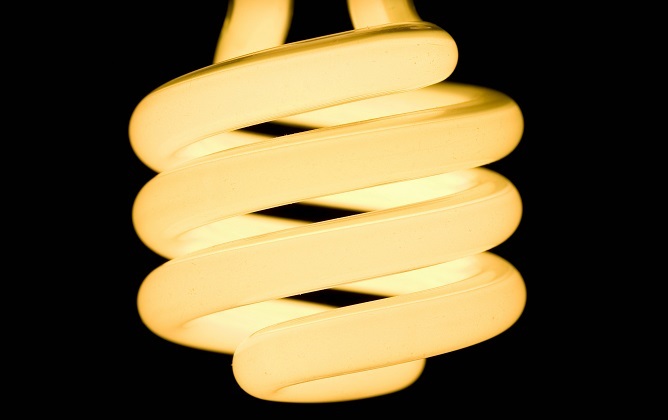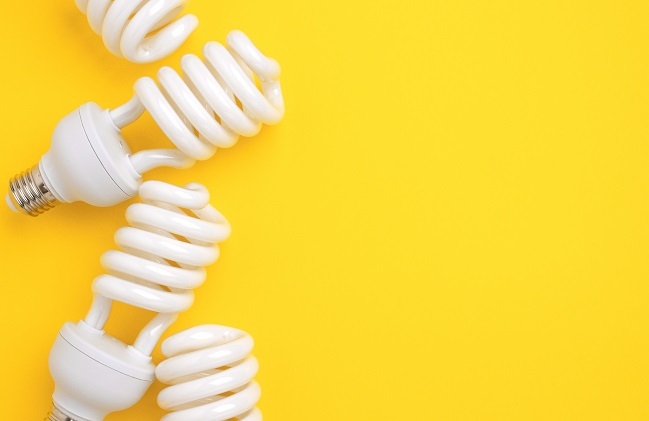
 Data Structure
Data Structure Networking
Networking RDBMS
RDBMS Operating System
Operating System Java
Java MS Excel
MS Excel iOS
iOS HTML
HTML CSS
CSS Android
Android Python
Python C Programming
C Programming C++
C++ C#
C# MongoDB
MongoDB MySQL
MySQL Javascript
Javascript PHP
PHP
- Selected Reading
- UPSC IAS Exams Notes
- Developer's Best Practices
- Questions and Answers
- Effective Resume Writing
- HR Interview Questions
- Computer Glossary
- Who is Who
What is the full form of CFL?
Introduction
Compact Fluorescent Lamp (CFL) is a sort of light bulb that uses less power and lasts longer than conventional incandescent bulbs. CFLs are more strength-efficient because they use a different technology to produce light, and they could save you money on your power bill.

However, CFLs contain a small amount of mercury, which requires unique disposal techniques to avoid environmental pollutants. Regardless of being largely replaced through LED bulbs, CFLs are still a viable lighting option for the ones searching for a less expensive, energy-efficient solution.
Working Principle
The working principle of a Compact Fluorescent Lamp (CFL) is based totally at the system of gas discharge and fluorescence.
Inside the CFL, there is a small quantity of mercury vapour and a coating of phosphor on the inner surface of the tube. While strength flows through the gas inside the tube, it ionises the mercury vapour, causing it to emit ultraviolet (UV) light.
The UV light strikes the phosphor coating, inflicting it to fluoresce and emit visible light. This process is just like how a fluorescent tube light works, however in a CFL, the tube is coiled into a smaller length to fit into well known light fixtures.
The electronic ballast, which is integrated into the base of the CFL, controls the flow of electricity to the tube, supplying the important voltage and modernity for the lamp to function efficiently. The ballast also helps start the lamp through imparting an excessive voltage for a short period until the lamp ignites, and then it regulates the current to maintain a constant light output.
The CFL's working principle is based on the controlled interaction among mercury vapour and phosphor, which results in an electricity-efficient and lengthy-lasting light source.
Advantages and Disadvantages
Advantages of Compact Fluorescent Lamps (CFLs)
Electricity-efficient CFLs use less energy than traditional incandescent bulbs, that could prevent money on your electricity bill.
Longer lifespan CFLs last as long as ten times longer than incandescent bulbs, reducing the need for frequent bulb replacements.
Decrease heat output CFLs produce less warmth than incandescent bulbs, making them a safer and extra relaxed lighting option.
Variety CFLs are available a spread of sizes and styles, allowing them to fit into different light fixtures and applications.
Disadvantages of Compact Fluorescent Lamps (CFLs)
Mercury content CFLs incorporate a small amount of mercury, which calls for unique disposal techniques to avoid environmental pollutants.
Slow start-up CFLs take some seconds to attain full brightness, which can be a disadvantage in areas in which instant bright light is required.
Value despite the fact that CFLs are extra energy-efficient and remain longer than incandescent bulbs, they're more high-priced upfront.
Dimming limitations CFLs are not constantly compatible with dimmer switches and may require special bulbs or fixtures to work correctly.
CFLs are a viable and price-effective lighting option that could help store energy and decrease prices. but, they do have some negative aspects that should be considered earlier than deciding on them as your primary light source.
Comparison with Incandescent Bulbs
Here's a comparison between Compact Fluorescent Lamps (CFLs) and Incandescent bulbs
Energy efficiency CFLs use 75% less energy than incandescent bulbs, which means they're more energy-efficient.
Lifespan CFLs last up to 10 times longer than incandescent bulbs, which means they need to be replaced less frequently.
Heat Output CFLs produce much less heat than incandescent bulbs, because of this they may be a more secure and extra comfortable lighting option.
Cost CFLs are extra expensive upfront than incandescent bulbs, however they save cash in the end due to their longer lifespan and energy efficiency.
Environmental impact CFLs incorporate a small quantity of mercury, which requires special disposal methods to avoid environmental pollutants. Incandescent bulbs, alternatively, do not incorporate any hazardous materials.
Mild fine CFLs produce an exclusive kind of light than incandescent bulbs, which may be much less appealing to some people.

However, current CFLs are to be had in specific coloration temperatures and sunglasses, making them greater flexible.
Conclusion
In conclusion, Compact Fluorescent Lamps (CFLs) are a popular light choice that provide numerous advantages over conventional incandescent bulbs. CFLs are more power-efficient, last longer, and produce much less heat, making them a safer and more cost-effective choice. However, they may be more luxurious upfront and require special disposal strategies because of their small quantity of mercury content. Despite their risks, CFLs remain a possible lighting fixtures option for homes, corporations, and different applications. As lights technology continues to evolve, CFLs are being changed via greater advanced and efficient lighting options, which includes LED bulbs.
FAQs
Q1. Are CFLs greater expensive than incandescent bulbs?
Ans: Yes, CFLs are more high-priced in advance than incandescent bulbs. However, they last up to 10 times longer and use 75% less energy, making them extra value-effective in the long run.
Q2. Are CFLs secure to apply?
Ans: Yes, CFLs are safe to use. They produce less heat than incandescent bulbs, which makes them a more secure lighting choice. However, they contain a small amount of mercury and require special disposal methods to avoid environmental pollution.
Q3. Can CFLs be used with dimmer switches?
Ans: Not all CFLs are compatible with dimmer switches. Some CFLs require special bulbs or fixtures to work correctly with dimmer switches.

